
By Leith van Onselen
It’s been a busy week, with Australia’s three main housing data providers – Australian Property Monitors (APM), the Australian Bureau of Statistics (ABS), and RP Data-Rismark – each providing their capital city house price indices results for December 2011.
Those unfamiliar with these indices would be forgiven for being confussed, with APM reporting that Australian house prices rose ever so slightly in the December quarter (up $129 or 0.02%), contradicting quarterly results published by both the ABS (down -1.0%) and RPData-Rismark (down -0.7%)..
Adding to the confusion, APM and RPData-Rismark also published their unit price results, which fell by -0.5% and -0.6% respectively over the December quarter, with RPData also publishing their dwelling price index (combining both houses and units), which exhibited a -0.5% quarterly decline.
The variations between the reported results reflects differences in how the indices are constructed. In a nutshell, both the ABS and APM use variants of the stratified median price method, which controls for changes in the composition of properties sold by separating the total sample of properties into a number of sub-samples. APM separately measures both capital city house and unit prices, whereas the ABS measures detached house prices only.
By contrast, RPData-Rismark publishes a hedonic index, which measures home price movements on a ‘like-for-like’ basis according to their key attributes, such as location, land size, number of bedrooms and bathrooms, and so on. RPData-Rismark calculate price changes for both detached houses and units and, unlike the other providers, measures prices in both capital city and regional locations.
A summary of the national capital city quarterly and annual results are provided in the below chart:
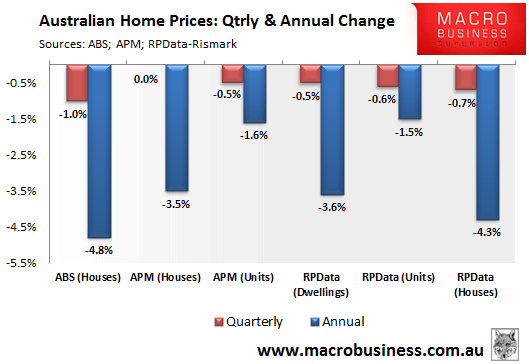
While there are clear differences between the results of the separate data providers, owing to the different methodologies employed, it is clear that units have performed better than houses over the past 12 months, losing between -1.5% and -1.6% of their value over the past year, compared to between -3.5% and -4.8% for houses.
The declines from peak also vary, with units performing relatively better than houses (see below chart):
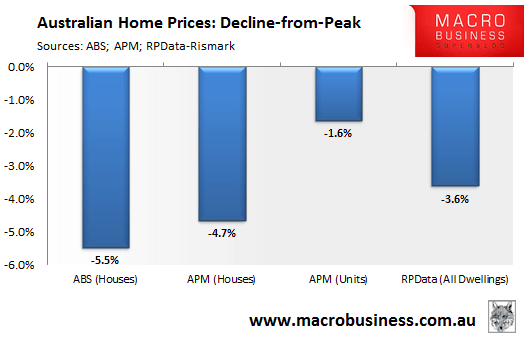
The below table provides a summary of the various results by capital city and nationally:
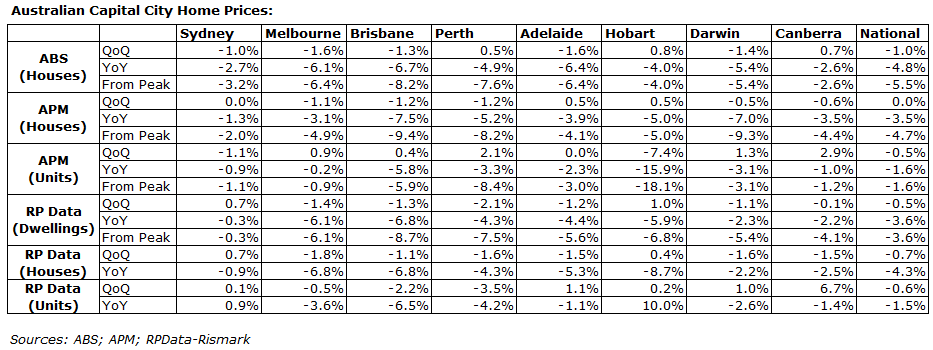
Again, while the results vary, it is clear that Brisbane and Perth have lead the nation’s capital city housing markets down, with cumulative losses now in the high single digits. By contrast, Australia’s largest city – Sydney – has been relatively resilient, with cumulative losses in the low single didgits only. And since Sydney comprises nearly one-third of the nation’s capital city homes, its resilience has helped stem losses nationally.
Where to from here?
Sydney’s housing market has been assisted by the New South Wales (NSW) Government’s announcement in early September 2011 that it would end the stamp duty concessions provided to first home buyers of pre-existing dwellings on 1 January 2012. This concession, which provided up to $18,000 of stamp duty relief, appears to have brought forward a significant amount of first home buyer demand in NSW as buyers rushed to benefit from the stamp duty concessions before they expired.
The surge in purchases by NSW first home buyers is clearly evident in the below chart, which shows the percentage of housing finance commitments attributable to first home buyers:
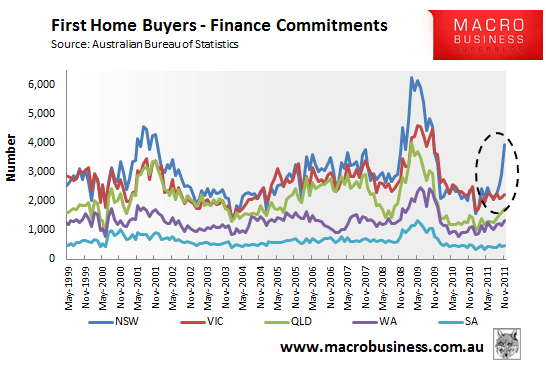
As you can see, the number of NSW first home buyer finance commitments (24%) are well above the national average (20%). And with the other states’ first home buyers remaining relatively flat, and NSW being the largest state in Australia, the surge in NSW first home buyer finance commitments is primarily responsible for boosting the national average as well.
Given that the NSW stamp duty concession expired on 31 December 2011, there is a high likelihood that demand from NSW first-home buyers will recede over the first quarter of 2012, creating headwinds for Sydney home prices and, by extension, national prices as well.
Tuesday’s release of the Reserve Bank of Australia’s (RBA) credit aggregates data also signaled more headwinds for the Australian housing market. Despite the recent 0.5% cut in mortgage interest rates, Australian housing credit growth slumped to fresh 34-year lows, suggesting that households are becoming increasingly averse to mortgage debt (see below chart):
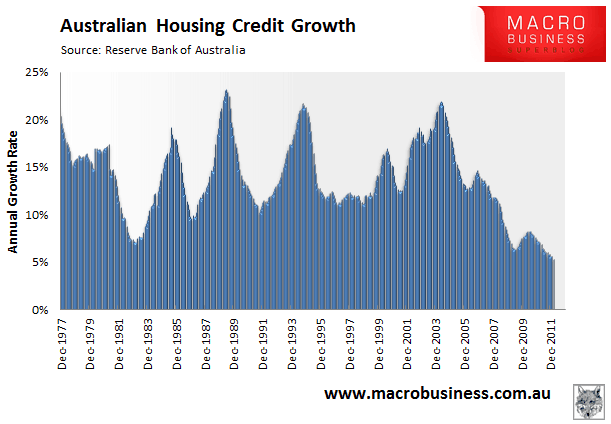
The RBA credit aggregates data is also supported by the most recent ABS housing finance figures, which showed the number of owner-occupied housing finance commitments (excluding refinancings) hovering near decade lows (see below chart).
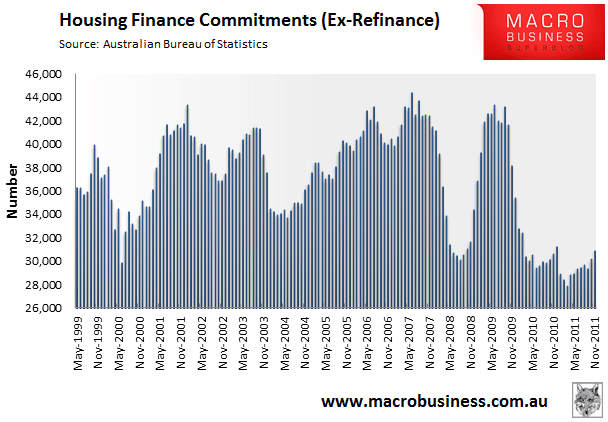
Without a sustained increase in the growth of housing credit, the housing market in 2012 is set to resemble 2011, with the ‘slow melt’ of Australian house prices likely to continue.

